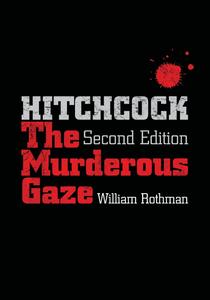
Free Download Hitchcock: The Murderous Gaze (SUNY Series, Horizons of Cinema), 2nd Edition by William Rothman
English | August 17, 2012 | ISBN: 143844317X, 1438443161 | True PDF | 504 pages | 216 MB
An expanded edition of a classic work of film criticism, with a provocative and eloquent new chapter on Marnie, Hitchcock's most heartfelt-and most controversial-film.
First published in 1982, William Rothman's Hitchcock is a classic work of film criticism. Written in an engaging style that is philosophically sophisticated yet free of jargon, and using over nine hundred images from the films to illustrate and back up its critical claims, the book follows six different Hitchcock films as they unfold, moment by moment, from first shot to last.
In addition to a thoughtful new preface and the original readings of The Lodger (1927), Murder! (1930), The 39 Steps (1935), Shadow of a Doubt (1943), and Psycho (1960), this expanded edition includes a groundbreaking new chapter―now the book's longest―on Marnie (1964), Hitchcock's most heartfelt yet most controversial film. Hitchcock never tired of quoting Oscar Wilde's line, "And all men kill the thing they love." Dark moods therefore prevail in the five original chapters, culminating in the reading of Psycho, but in demonstrating how Marnie overcomes, or transcends, the murderous aspect of Hitchcock's art, this new chapter balances the scales and gives an important new dimension to the book.
With exemplary precision, Hitchcock, Second Edition shows how Hitchcock films express, cinematically, serious thoughts about such matters as the nature and relationships of love, murder, sexuality, marriage, and theater―and about their own medium. In so doing, it keeps faith with the idea that Hitchcock was a master, perhaps the master, of what he called the "art of pure cinema." However, insofar as it investigates philosophically the conditions of authorship in the medium of film, it is an auteurist study unlike any other. By attending to the films themselves and to the ways we experience them, rather than allowing some theory to dictate what to say about them, the book proves the fruitfulness of an approach that is open and responsive to the ways serious films are capable of teaching us how to think seriously about them.
